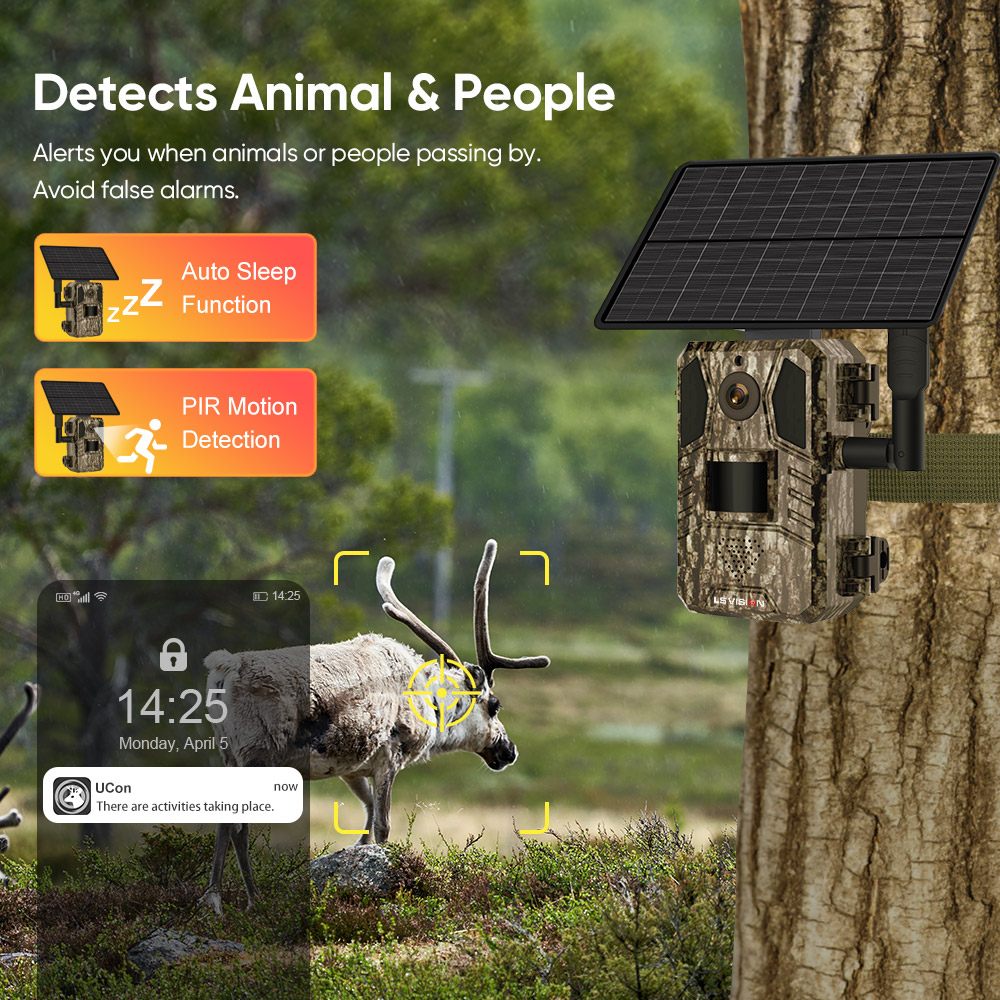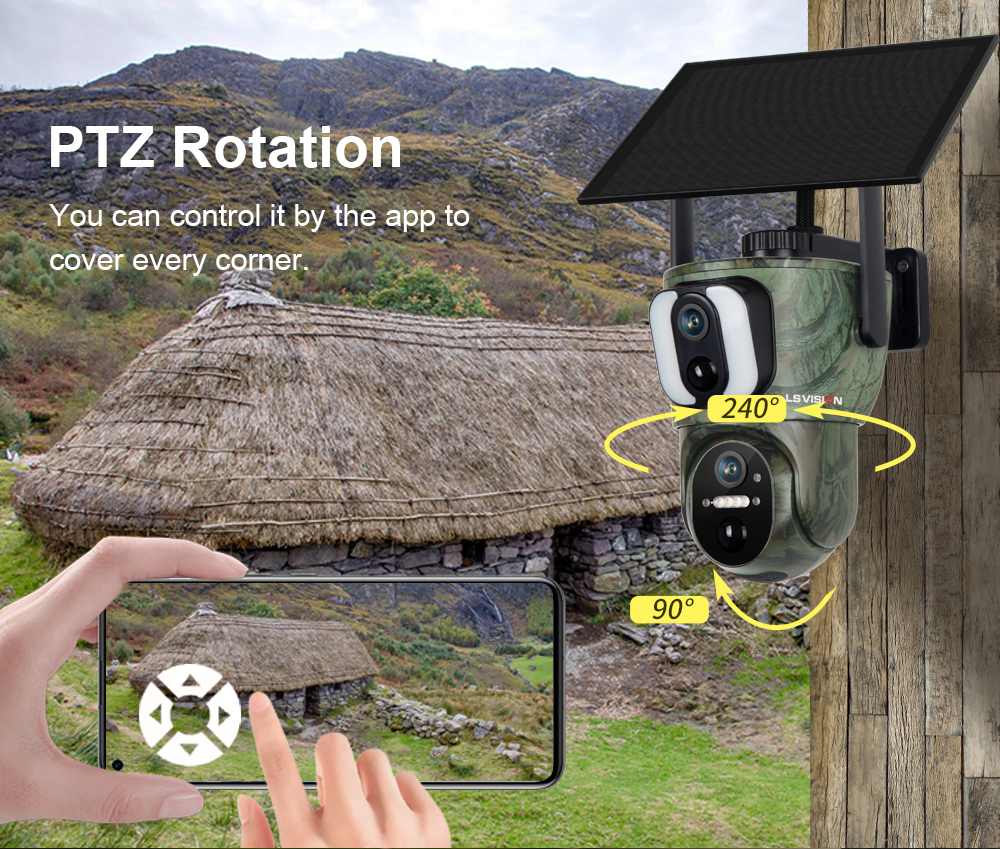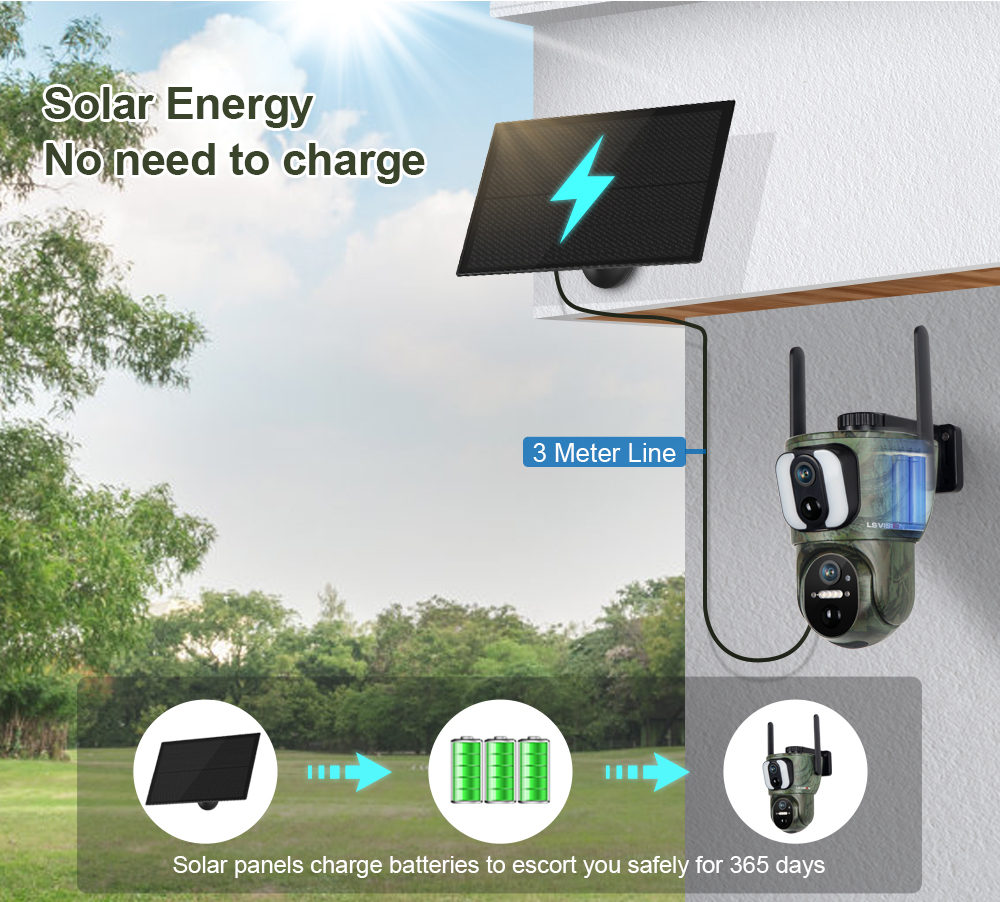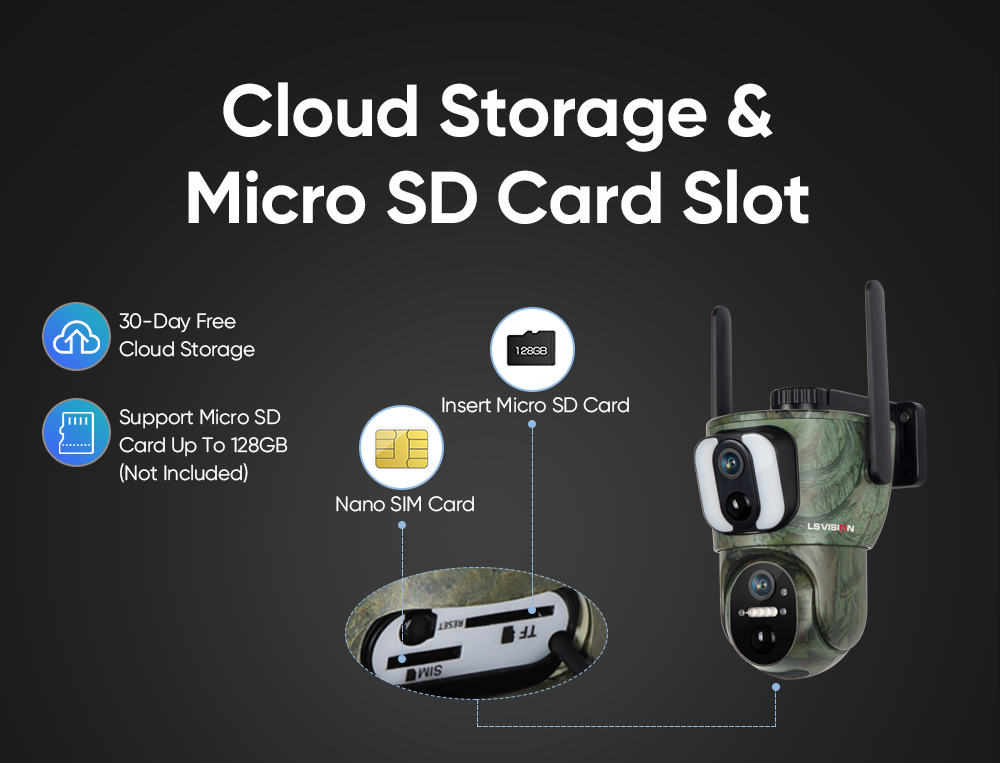Оглавление
ToggleThe use and importance of Hunting Game Cameras.
- Accurately capture wildlife activities: LS VISION hunting game cameras are equipped with a high-sensitivity sensor, which can accurately detect the movement of animals and automatically take high-definition photos or videos. This enables explorers and researchers to monitor the behavior of animals remotely without having to go into areas that may be dangerous or difficult to reach.
- All-weather monitoring: LS VISION hunting camera has excellent night vision function, which can clearly record the activities of animals even at night or in low light environments. This enables users to collect valuable data both during the day and at night.
- Durability and reliability: Камера LS VISION is sturdy in design, waterproof, dustproof, and impact-resistant, which can cope with extreme weather and harsh environments and ensure long-term stable work in the wild.

Dual lens vs single-lens wildlife camera: which is more suitable for your monitoring needs?
1· Design and perspective

- Dual lens version: Equipped with two lenses, it can capture images in different directions at the same time, providing a wider monitoring perspective. This is especially important for areas with a large monitoring range, which can avoid missing some important pictures.
- Applicable scenario: The environment that needs all-round monitoring, such as hunting in the wild, and security monitoring in farms and remote areas.
- Single lens version: Equipped with only one lens, the monitoring range is relatively limited. Although it can rotate and adjust the viewing angle, it can’t cover multiple directions at the same time like a dual lens.
- Applicable scene: suitable for small-scale monitoring, such as monitoring specific doorways, fences, courtyards, and other places.
- Suggestion: If you need a wider monitoring area, especially in a complex or changeable environment, a camera witha dual lens design will be more suitable. If the monitoring range is small and mainly concentrated in a single angle, the single lens version can meet the demand.
2· Power and battery life

- Dual lens version: Equipped with a 6-watt solar panel, and a 10000mAh battery can provide long-term operation capability. Suitable for long-term outdoor monitoring. It supports solar power supply and has a long-lasting battery, which can effectively extend the working time of the equipment and reduce the trouble of frequent battery replacement.
- Single lens version: Equipped with a 3.5-watt solar panel and a 7800mAh battery, the battery life is slightly worse than that of the dual-lens version, but it can still meet the long-term work needs of most users. For scenes that don’t need long-term or high-frequency work, the single-lens version of the battery and solar system can also cope.
- Suggestion: If you need to monitor continuously for a long time, especially in remote areas or in an environment where the battery cannot be maintained frequently, the dual-lens version of the battery and solar energy design may be more suitable. The single-lens version is suitable for scenes with low power demand and relatively infrequent monitoring tasks.

LS VISION Hunting Camera Installation Guide: From Location Selection to Debugging Settings
Select the installation location
- Choose a suitable installation location: Make sure that the camera can cover the area you want to monitor, such as hunting grounds and areas with frequent animal activities.
- Avoid direct sunlight: Avoid pointing the camera at the place where the sun shines directly, because this may affect the image quality.
- Avoid excessive occlusion: Make sure there are not too many branches or other obstacles in front, which may affect the camera’s field of vision or trigger the sensor.
- Installation height: Usually, the hunting camera is installed at a height of 1.5 to 2.5 meters, which can effectively prevent animals from touching the camera and ensure a wide field of vision.
Install the camera
- Mounting bracket or mounting frame: Most LS VISION hunting cameras are equipped with an adjustable mounting bracket. After selecting the position, use screws or hooks to fix the bracket on trees, wall,s or other solid supports.
- Adjust the camera angle: After installing the bracket, hang the camera on the bracket to ensure that the camera is aimed at the area you want to monitor. Adjust the angle of the camera to ensure the widest field of vision and avoid occlusion.
Power connection
- Use solar panels (if available): Most LS VISION hunting cameras support solar charging. Connect the solar panel to the battery port of the camera to ensure that the camera can run for a long time. Solar panels should be installed in an unobstructed place to maximize light absorption.
- Battery installation: If the camera relies on batteries for power supply, make sure that the batteries are properly installed in the battery compartment of the camera. Some cameras may need to replace or recharge batteries, so make sure the batteries are fully charged or have a spare battery ready.

SD card or cloud storage
- Insert SD card: Most hunting cameras support storing video through SD cards. According to the maximum storage capacity supported by the camera, insert a compatible SD card into the camera (generally supporting a card with a maximum of 128GB).
- Cloud storage configuration (if supported): Some models of cameras also support cloud storage. If the camera supports it, you can choose to upload the video of the camera to the cloud to ensure that the data is not easily lost.
Adjust the camera settings
- Adjust shooting mode: enter the camera setting interface, select shooting mode (such as video, photo or video+photo) as needed, and set appropriate resolution and sensitivity.
- PIR sensing setting: Adjust the sensitivity of PIR (passive infrared) sensor to better detect the movement of animals. Too high sensitivity may lead to too many irrelevant activities being captured, and too low sensitivity may miss important monitoring pictures.
- Timing shooting and alarm setting: Set the working time of the camera (for example, automatic shooting and timing shooting every day) and alarm function, so that when animals are detected, the camera can give timely notice.
Configure mobile applications (if supported)
- Many LS VISION hunting cameras support synchronization with mobile phone applications, allowing users to remotely view real-time images or recorded videos of cameras through mobile phones.
- Download and install the official application, register and log in, and follow the prompts to pair with the camera. Usually, you can scan the QR code on the camera or pair it through Wi-Fi.

Testing and adjustment
- Testing: After installation and configuration, conduct a camera test to ensure that the image is clear and unobstructed, and the sensor can trigger normally.
- Remote monitoring: If the camera supports remote viewing, use your mobile phone or computer to view the video stream of the camera to ensure that it works normally and meets expectations.
- Adjust the viewing angle and setting: according to the test results, further adjust the position or setting of the camera to ensure the best monitoring effect.

